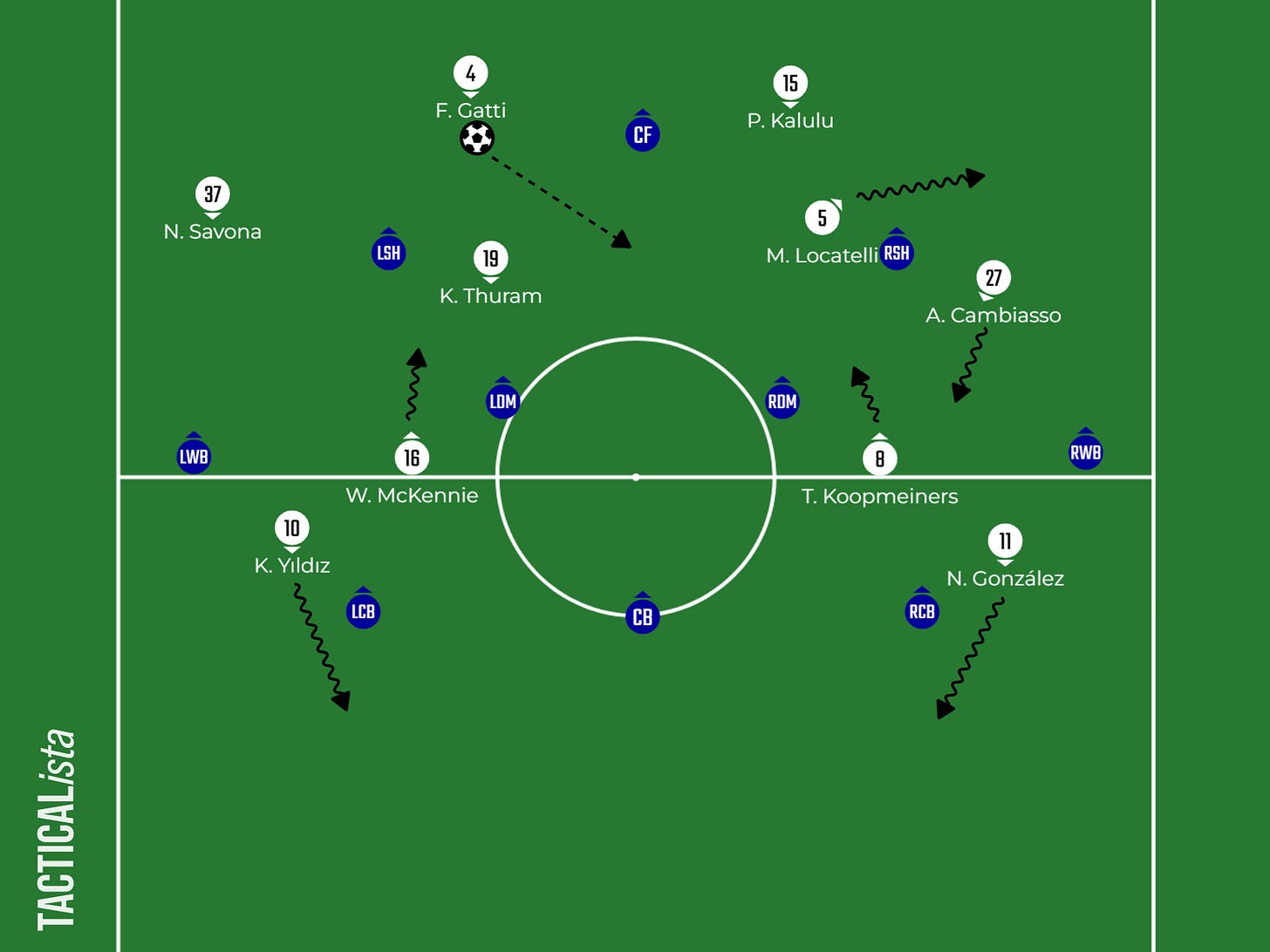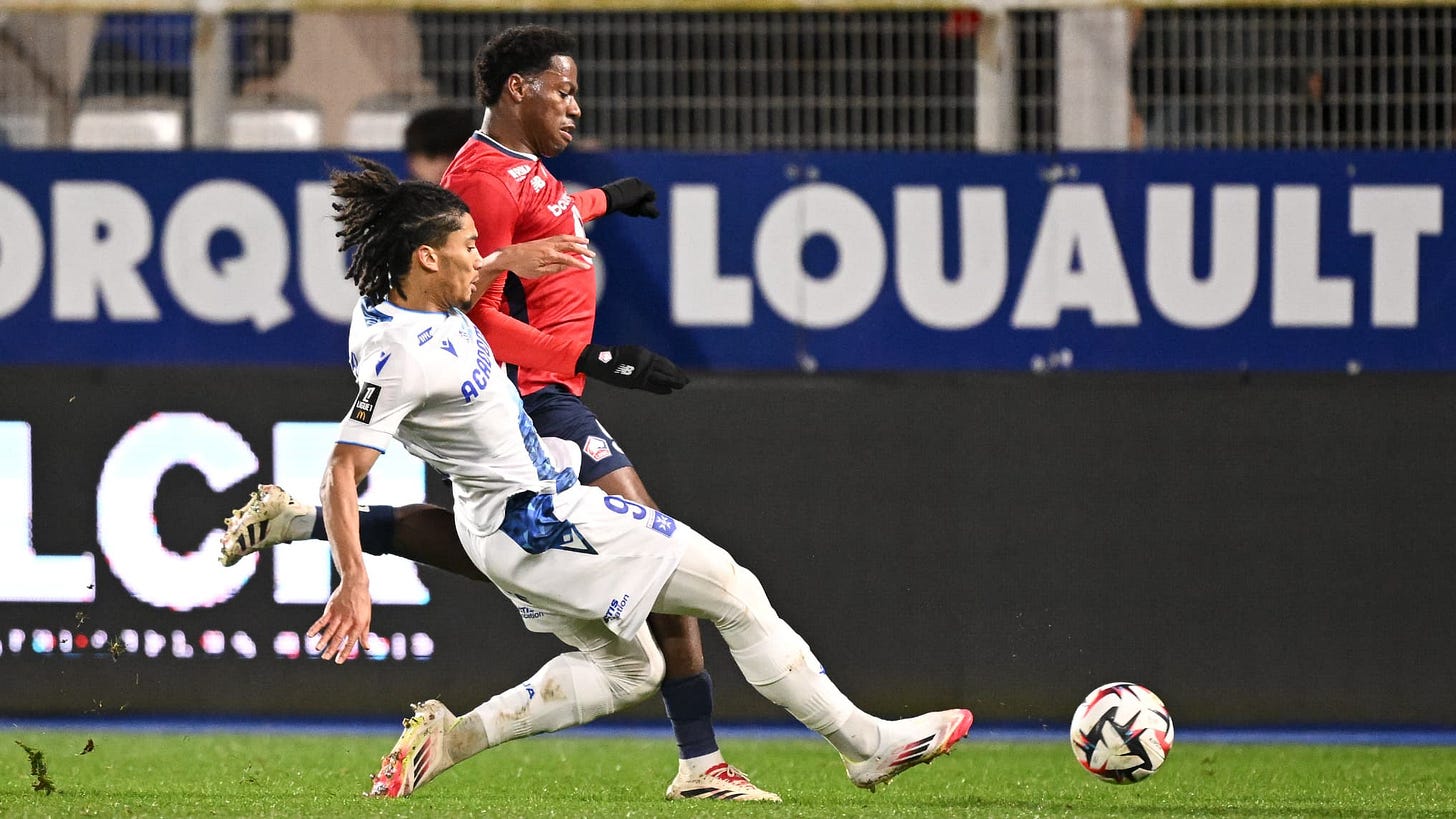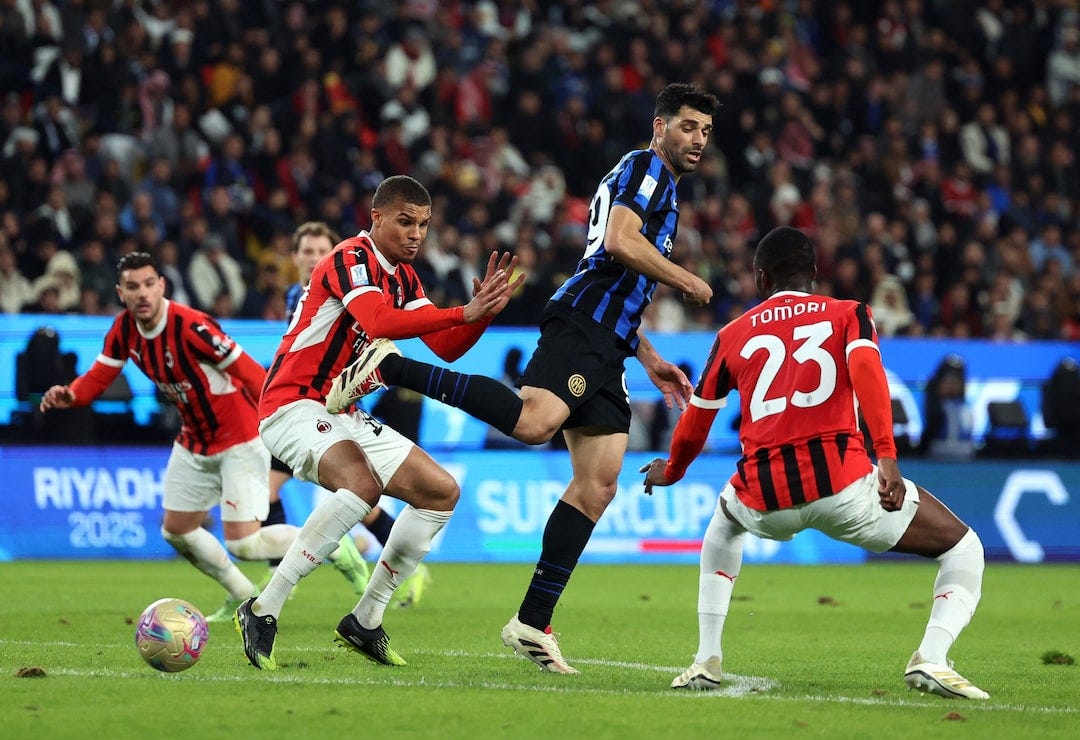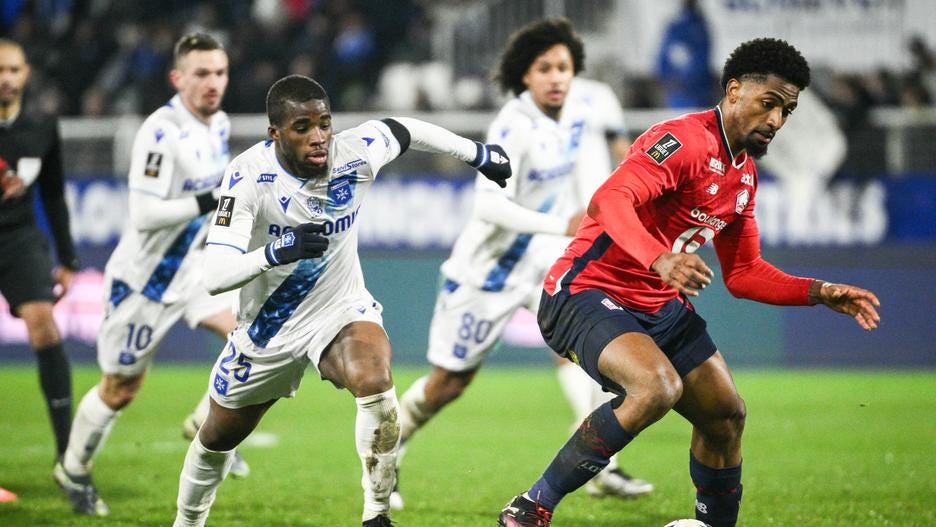Daryl's Notebook: What I learned from various European leagues
We will be departing England and taking a round trip around Europe to watch different leagues around the continent!
Premier League football has always been at the highest quality and there are so many things that I can learn about since there are new ideas being implemented in every single match. But, it is time to leave the island, take the ferry across to continental Europe, and see what else I can learn from the rest of the top 5 European leagues!
I have covered Ligue 1 and Serie A back in October and I was left feeling excited because of how innovative both leagues were. There were exciting young players, fascinating coaches with new ideas, and overall, fun leagues to watch. So, along with taking a quick trip down to Spain to visit Girona, hopefully I will continue to be treated the same for this trip once more.
This edition will also continue the puzzle from the last one, with 4 more teams being introduced into the project that I am working on in the background. So there will be more clues in more images and in the teams that I will be watching for this one.
Atalanta 1-1 Juventus
Atalanta showed an early preference to play down the wings as they shifted the ball from side to side and hoped that Juventus players would not recover their position quick enough. They relied on rotations between the double pivot (#15) Marten de Roon and (#13) Éderson and the wide centre-backs (#42) Giorgio Scalvini and (#23) Sead Kolašinac. When one of the wide centre-backs moved further out wide to stay close to the wing-back, the nearest central midfielder would drop deep to retain Atalanta’s back three while also provided more numbers out wide.
Juventus, in contrary, defended in a 4-4-2/4-2-4 pressing shape which allowed them to counter Atalanta’s build-up plans straight away by having numbers to defend out wide. When the host had the ball on either flanks, Juventus shifted their defensive shape over to that side and overloaded the area while also pinned the wide centre-back and the wing-back out wide, gave them little to no space to cut inside. This forced one of the two strikers, (#17) Charles De Ketelaere and (#11) Ademola Lookman, to move into the half space but still could not get the ball out into an unoccupied area due to Juventus’ overload.
I have heard a lot about Thiago Motta’s playing style that relies a lot on player rotations and have also watched one of Juventus’ Champions League league phase matches to see that with my own eyes. There were still a few elements of that, like centre-back (#4) Federico Gatti carrying the ball into midfield, left-back (#27) Andrea Cambiasso moved inside while central midfielder (#5) Manuel Locatelli dropped into his position, or the two attacking midfielders (#8) Teun Koopmeiners and (#16) Weston McKennie dropped deep for wingers (#11) Nicolás González and (#10) Kenan Yıldız to make runs in behind Atalanta’s backline. But compared to the early days of Motta’s Juventus, the first 10 minutes of the match seemed less chaotic with more structured movements and rotations taking place.

Technically speaking, Atalanta also showed a glimpse of their rotational play as well with the movements of the wide centre-backs. Very often, it was possible to see Scalvini and Kolašinac stepping into midfield or attacking the half-space. Both were good at carrying the ball forward to help the team progressed the play, and they could retain their position after carrying the ball forward since one of the two midfielders had already dropped into their position to help with defending.
As much as Juventus played out from the back and used rotations to move Atalanta’s pressing block, they…turned over the ball a lot inside their own half through misplaced passes and the lack of urgency with their build up. In turn, Atalanta players had plenty of opportunities to intercept passes and created a quick counter-attack inside of Juventus’ own defensive third. The only upside for the away side was the fact that they managed to regroup into their low block quite quickly and covered up spaces in front of the box, which prevented Atalanta from making penalty box entries and created chances that would put keeper (#29) Michele Di Gregorio in significant danger.
Atalanta’s press also seemed more and more coordinated as the first half went on. The host used all overloads all over the place to prevent Juventus from creating long possession sequences and playing through their defensive block. They would attempt to guide Motta’s side out wide by blocking passing lanes centrally, then relied on a man-to-man system to chase Juventus players down and waited for an opportunity to intercept the ball for a counter-attack. That is why currently Atalanta is so hard to play against both in Serie A and in Europe.
But on the offensive side, the host did not seem like they had an answer to Juventus’ defensive block. Both (#11) Ademola Lookman and (#8) Mario Pašalić looked quite active, though they had to move out wide to have more opportunities to get on the ball. In contrary, (#17) Charles De Ketelaere looked completely lost and invisible up top as the Belgian was nowhere to be found and only had a couple of opportunities to take a shot.
Honestly, Juventus was not any better inside of the final third. Without (#9) Dušan Vlahović and the unsuccessful usage of two false 9s, the away side just had no outlet for goals when both Yıldız and González had to either stayed very wide to stretch Atalanta’s backline or dropped deep to receive the ball. That left Koopmeiners as the only attacking focal point for Juventus and the Dutch had been disappointing inside of the final third since he could not convert any chances created for him or could not even get close to the ball.
It took an overlapping centre-back in (#15) Pierre Kalulu to open the score for Juventus, and while his run was remarkable, it showed the ineffectiveness of Juventus’ front line that they needed a centre-back to make an off-ball run from deep to find a breakthrough. And once again, Koopmeiners was nowhere to be found while McKennie assisted the French defender on this occasion.
Playing out from the back did not work for the away side, so they have slowly shifted to using long passes from Di Gregorio to exploit the space in behind Atalanta’s midfield. As usual, those long passes were aimed towards the wingers with the hope that they could bring the ball down and attack Atalanta’s centre-backs with their dribbles. That…was easier said than done, however, because the host had an aerial-and-physical-dominant Scalvini played on the right and Kolašinac was not an easy pushover either. So basically…Juventus had little to no attacking plans now with almost every single plan got shut off.
Atalanta’s cross reliance finally paid off with de Roon’s cross headed to the back post, where substitute (#16) Raoul Bellanova was ready and outjumped Cambiasso in the air to bring the ball down. Another substitute in (#32) Mateo Retegui also appeared in the box and showed why he has been such a reliable striker for the host by appearing at the right place to head the ball home for an equaliser.
Without a clear way into the box, it was hard to see this match advanced further from a 1-1 draw. Credits to the defence, of course, but this was a bad day for both teams’ attack as they both did not have a clear plan to break the opposition’s low block down. The ball just went around and around the box while the opposing defenders packed up right on the edge of the box, which then turned to frustration for the attacking team. Overall, a cagey match between two teams that I had hoped for a better tactical showcase.
Internazionale 2-3 AC Milan
Usual stuff from Internazionale because even though they lined up in a 3-5-2, Simone Inzaghi’s version of a 3-5-2 was always interesting to watch. With two central midfielders in (#20) Hakan Çalhanoğlu and (#23) Nicolò Barella stayed close to the centre-backs, both offered two passing options that would help Inter progressed the ball up the pitch. At times, it was also possible to notice that both players would drop into the centre-back slots, which then allowed (#95) Alessandro Bastoni and (#31) Yann Aurel Bisseck to run forward. In general, Internazionale was very flexible when they had the ball and utilised a lot of rotations to get their best players into advantageous positions.

Up top, a two-man partnership by (#99) Mehdi Taremi and (#10) Lautaro Martínez looked to pin down Milan’s centre-backs and encouraged long passes in behind from Bastoni and Bisseck, who would usually be in and around the half-space to pick up the ball. Inter had many creative players who could make passes from deep, which then made sense for Taremi and Martínez to exploit the space in behind Milan’s backline.
The home team (not host, because this match was at a neutral venue!) surprised me of how aggressive their press was. I still held the typical assumption that a team who used a 3-5-2 would prefer to defend in a mid/low-block than chase the opposition down (thanks Chris Wilder’s Sheffield United and Diego Simeone’s Atlético Madrid!), but Inzaghi has introduced a whole new idea that challenged my assumption straight away while also impressed me. Similar to Atalanta, Internazionale looked to overload the central area with their numbers and guided the opposition wide to then create an overload by shifting the whole team over to one side. Also with a man-to-man marking system, Internazionale closed down Milan players quickly and did not give them too much time on the ball, probably with the intention of forcing errors and mistakes from their rival and opened up an opportunity for a counter-attack.
Milan, on the other hand, seemed to rely quite heavily on individual ability to get the ball into the box. Getting players like (#19) Theo Hernández, (#11) Christian Pulisic, or (#14) Tijjani Reijnders into positions where they could make the difference was possibly their main goal for the first 20 minutes or so as they attempted to find a plan to break Internazionale’s low block down and get the ball to (#7) Álvaro Morata more often.
First half turned out to be a cagey half with more challenges being thrown around than actual shots attempted. When both teams looked towards their individuals to create opportunities, obviously the opposition would target them and looked to bring them down through fouls or challenges. This resulted in a total of 12 fouls committed by the two teams in the half, while the only noticeable chance created in the half was Martínez’s opening goal of the match and it had to come from a quick throw-in situation from Internazionale which capitalised on Milan’s inability to regroup in time.
Early minutes into the second half and Internazionale demonstrated their attacking plan straight away. From a long ball by centre-back (#6) Stefan de Vrij, Taremi capitalised on Milan’s high defensive line to make a run into the channel and in behind Milan’s backline and received that long ball from the Italian centre-back. Once he brought the ball down, it was a clean through on goal situation for Taremi and it would be a surprise if Internazionale’s striker did not score from a one-on-one situation.
You could tell how badly Milan missed (#10) Rafael Leão. For the 50 minutes that (#20) Álex Jiménez occupied the right winger spot, Milan looked lackluster up front and could not create many noticeable chances. Once the Portuguese winger came on as the left winger to allow Pulisic to move to the right, his first noticeable action, which was a dribble, immediately drew a foul from Internazionale’s (#22) Henrikh Mkhitaryan and helped Milan got a free kick, from which Hernández easily scored. Just ten minutes later and he almost got a direct assist, and again it came from a dribble, which he got past Dumfries to square the ball into the box for Reijnders, who skied the ball, but it also found Bastoni’s head on the way up.
Internazionale still did not look that bad even when Milan managed to narrow the lead down. They still created decent chances, but (#16) Mike Maignan looked solid in goal and kept his team in the game. On the other end, Leão coming on and Theo’s goal seemed to bring new life to Milan as they look rejuvenated with their attacks and got closer and closer to another goal. Still no clear identity and still that reliance on individuals like Leão, Theo, and Pulisic, but the Portuguese winger had unlocked something in Milan that helped them made the push forward. It also helped that Internazionale also started to drop deeper and closer to their own goal, which gave Milan more time with the ball and an easier way to control territory.
That overwhelming pressure from Milan had to turn into something for the remainder of the match, and it did once more with an attack that came down Milan’s left-hand side, which was their strongest attacking side. A dribble from Theo got Milan from the middle third into Internazionale’s own half, where he squared the ball into the box for Pulisic to pick up and put the ball pass (#1) Yann Sommer’s reach. Milan completed the comeback through a combination between, you guessed it!, Pulisic and Leão. With Pulisic stayed wide and dribbled with the ball, that pinned a couple of Internazionale’s defenders out wide and opened up the channel for Leão to run into. Once the Portuguese had the ball inside the box, the Portuguese squared the ball across the 6-yard box and found substitute (#90) Tammy Abraham who tucked the ball home for the winner.
Auxerre vs Lille
No weird or strange build-up shape, but Bruno Génésio’s Lille looked to keep things simple by playing out from the back with a 4-1-2-3 shape where players basically retained their original starting positions and did not look to be in between Auxerre’s defensive lines, but rather occupied wide positions to help with Lille’s preference to attack down the flanks.
What’s interesting about Lille’s build up shape happened after a few build up passes, where centre-backs (#4) Alexsandro Ribeiro and (#18) Bafodé Diakité would carry the ball into midfield by themselves and on a few occasions. This required one of the midfielders to drop deep and fill in that centre-back’s position to not only retain their 4-1-2-3 shape, but also allow that ball-carrying centre-back to stay in an advanced position.
Another interesting thing for me was (#2) Aïssa Mandi playing as a right-back instead of as a centre-back, and this was not the case of the Algerian defender played as the third centre-back in build up or anything. It was possible to see Mandi taking up a more advanced position higher up the pitch or stayed slightly close to the midfielders, which created a passing lane from the centre-backs to right winger (#10) Rémy Cabella. Basically, everything boiled down to lots of player rotations in the middle and out wide in an attempt to move Auxerre’s defensive block.

The pain of this approach was, at times, the key goalscorers for Lille like (#9) Jonathan David or (#7) Hákon Haraldsson had to move out of their original positions in order to drop deep and receive the ball. This left the away side with no one up top who could stretch Auxerre’s backline with their runs in behind or take-ons, and this could hinder Lille’s possession sequence since they could not get the ball into the penalty box without anyone leading the line.
Auxerre, meanwhile, relied quite heavily on long balls over the top to create chances, with most of those passes aimed at striker (#17) Lassine Sinayoko. They did not stand out in the first 15 minutes or so since most of their attempts to create a chance got stopped very quickly by Lille’s mid-block.
The host’s mid/low block did not do too bad of a job either. Setting up in a 3-4-2-1/5-4-1, it gave them the numerical advantage in the central area, which Auxerre used to block Lille from playing through their defensive line. This forced the away side to attack down the flanks, and even though it was their preference to do so, Auxerre’s wide overloads also prevented most of the attacking attempts.
Lille attackers also dwelled on the ball quite a lot when they got the ball into the final third, which is understandable considering they would want to find good goal-scoring angles and positions. But against Auxerre’s disciplined back five, the host was able to swarm Lille attackers quickly and restricted the space that they had to take a shot. This pretty much resulted in the lack of shots on target from Lille in the first half.
Auxerre conceded two questionable penalty calls early into the second half, which one of them was checked and confirmed by VAR. Both fouls were slightly too soft on Haraldsson and the Icelandic winger went down a bit too easily. That did not seem to matter, however, since David still missed the penalty and kept the score at 0-0 after almost 15 minutes of the second half was played.
The second penalty call also led to Auxerre’s right wing-back (#24) Paul Joly got sent off with a straight red. Instead of making any subs straight away, Auxerre’s manager Christophe Pélissier stuck with the team and moved back to a hybrid 4-4-1/4-3-2 with left centre-back (#92) Clément Akpa filled into that right-back spot that Joly left behind. Auxerre’s first substitution was also a straight swap, with midfielder (#18) Assane Dioussé came off for former Bristol City and Burnley midfielder (#80) Han-Noah Massengo.
Probably, the 4-4-1 is one of the more classic formations that most teams now use when they go down to ten men since it provides defensive stability and balance at the cost of only having one striker instead of two. Against Lille’s preferred approach of attacking down the flanks, that formation worked because it gave Auxerre at least two players to defend out wide, allowed them to close down Lille’s full-backs and wingers when they received the ball.
The second half also turned into the attacking midfielders’ show where Lille’s Haraldsson and Auxerre’s (#10) Gaëtan Perrin ran the show. While Haraldsson looked lively both down the left and right and made up for David’s now-isolation up top by creating and taking chances on by himself, Perrin had led Auxerre’s counter-attacks on multiple occasions since Joly’s dismissal. His dribbles gave Lille defenders a tough time to stop him, and he was also able to create a couple of chances when he had the opportunity.
At the back, meanwhile, Auxerre’s keeper (#40) Théo De Percin had a good performance in goal to save Auxerre from conceding on multiple occasions. While the defensive performance had to be credited to Auxerre’s entire defensive unit, De Percin had showed up and made some saves, including the penalty save, to keep the host alive in the match.
Lille attempted to add firepower to their frontline by bringing (#27) Mohamed Bayo on to play alongside David. Yet, that seemed to backfire massively as it made the front two even more isolated as Auxerre started to drop deeper after the dismissal. In total, since he came on at the 84th minute, Bayo made a total of…1 touch. And this was 6 minutes of regular time and 9 minutes of stoppage time, so that came to a total of 14 minutes of playing time with just a single touch.
Lille had ideas to break Auxerre’s defensive block down, which included both centre-backs taking on a more advanced position, particularly Alexsandro. But their reliance on crosses just did not work when Auxerre was able to swarm the box in time to dominate Lille’s front two and intercepted crosses that came in from both flanks. They also tried to work the ball through the half-spaces, but lacked that final ball to connect all of the players together to create an actual threatening chance towards Auxerre’s goal.





